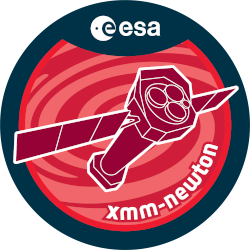

| Proposal ID | 076349 |
| Title | Challenging the rotation-activity paradigm II |
| Download Data Associated to the proposal | https://nxsa.esac.esa.int/nxsa-sl/servlet/data-action-aio?obsno=0763490301 |
| DOI | https://doi.org/10.5270/esa-f5vodyl |
| Principal Investigator, PI | Dr Stefan Czesla |
| Abstract | We propose to obtain XMM-Newton snapshots of seven of the most slowly rotatingG-type superflare stars identified by the Kepler satellite to test whether theyadhere to the rotation-activity paradigm. While the strongest flares observed onthe Sun release about 1e32 erg, Kepler observed G-type dwarfs that producewhite-light flares releasing up to four orders of magnitude more energy.Curiously, many of these superflare stars are apparently slow rotators.Notwithstanding, our recent XMM-Newton campaign showed that these stars can beextremely bright X-ray sources (about 1e30 erg/s). Consequently, we identifiedthe slowest rotators among the superflare stars amenable to X-ray observationsto study their X-ray emission. |
| Publications |
|
| Instrument | EMOS1, EMOS2, EPN, OM, RGS1, RGS2 |
| Temporal Coverage | 2015-09-13T00:12:51Z/2015-11-23T13:48:07Z |
| Version | 17.56_20190403_1200 |
| Mission Description | The European Space Agencys (ESA) X-ray Multi-Mirror Mission (XMM-Newton) was launched by an Ariane 504 on December 10th 1999. XMM-Newton is ESAs second cornerstone of the Horizon 2000 Science Programme. It carries 3 high throughput X-ray telescopes with an unprecedented effective area, and an optical monitor, the first flown on a X-ray observatory. The large collecting area and ability to make long uninterrupted exposures provide highly sensitive observations. Since Earths atmosphere blocks out all X-rays, only a telescope in space can detect and study celestial X-ray sources. The XMM-Newton mission is helping scientists to solve a number of cosmic mysteries, ranging from the enigmatic black holes to the origins of the Universe itself. Observing time on XMM-Newton is being made available to the scientific community, applying for observational periods on a competitive basis. |
| Creator Contact | https://www.cosmos.esa.int/web/xmm-newton/xmm-newton-helpdesk |
| Date Published | 2016-12-14T23:00:00Z |
| Last Update | 2025-08-04 |
| Keywords | "slowly rotating", "kepler satellite", "xmm newton campaign", "slowest rotators", "1e30 erg", "xray emission", "type superflare stars", "XMM", "sun release", "apparently slow rotators", "type dwarfs", "rotation activity paradigm", "xmm newton snapshots", "superflare stars amenable", "bright xray sources", "XMM-Newton", "1e32 erg", "superflare stars", "strongest flare" |
| Publisher And Registrant | European Space Agency |
| Credit Guidelines | European Space Agency, Dr Stefan Czesla, 2016, 'Challenging the rotation-activity paradigm II', 17.56_20190403_1200, European Space Agency, https://doi.org/10.5270/esa-f5vodyl |